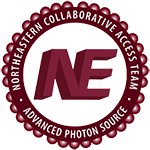Structural basis for conductance through TRIC cation channels.
Publication Type:
Journal ArticleSource:
Nat Commun, Volume 8, p.15103 (2017)Abstract:
<p>Mammalian TRICs function as K(+)-permeable cation channels that provide counter ions for Ca(2+) handling in intracellular stores. Here we describe the structures of two prokaryotic homologues, archaeal SaTRIC and bacterial CpTRIC, showing that TRIC channels are symmetrical trimers with transmembrane pores through each protomer. Each pore holds a string of water molecules centred at kinked helices in two inverted-repeat triple-helix bundles (THBs). The pores are locked in a closed state by a hydrogen bond network at the C terminus of the THBs, which is lost when the pores assume an open conformation. The transition between the open and close states seems to be mediated by cation binding to conserved residues along the three-fold axis. Electrophysiology and mutagenesis studies show that prokaryotic TRICs have similar functional properties to those of mammalian TRICs and implicate the three-fold axis in the allosteric regulation of the channel.</p>
